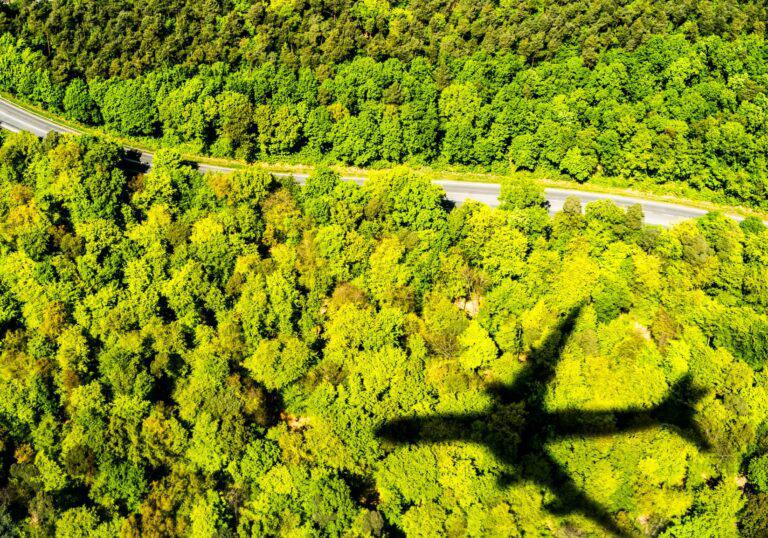Markets In An Alternate Universe—Early Mover Advantage In Buying Carbon Credits To Offset Your Firm’s CO2 Footprint Carrie McCabe Contributor Opinions expressed by Forbes Contributors are their own. I cover transformation in asset management, investing, and ESG. New! Follow this author to improve your content experience.
Got it! Jul 11, 2022, 05:03am EDT | Share to Facebook Share to Twitter Share to Linkedin Air travel carbon offset treesforall If ESG data is “The Wild World” , then buying the first carbon credits to offset your firm’s carbon footprint is surely akin to being in an alternate universe. . .
. As noted in earlier columns, ESG data measurement can be messy and inconsistent . Especially when moving from public securities to private securities.
Though a couple of groups, including ESG Data Convergence Initiative (formerly Data Convergence Project) and Novata , are bridging the way through the difficulties of measurement for private securities in particular— So next, how can we think about carbon offsets for our firm’s CO2 footprint? If we are an asset manager, we have the double dilemma of the footprint of our firm and the footprint of our asset portfolios. For illustrative purposes, let’s use a simple element in common. As all firms have their own enterprise footprint—let’s start there—and look at one of the common elements within the enterprise footprint—air travel .
A simple framework for offsetting a firm’s carbon footprint from air travel might look something like this— 1) Measure our firm’s CO2 footprint from air travel MORE FOR YOU Stocks This Week: Buy KLA Tencor And Starbucks Fintech Stocks Continue To Lag The Market. Time To Buy? What’s Next For BlackBerry Stock After A 4% Move Last Week? There are websites like myclimate on which one can calculate individual flights and then purchase carbon offsets online, a simple but more expensive option. For example, a round-trip non-stop economy trip between LAX and JFK is about 6000 miles, with CO2 emission of 1.
3 tons. $40 is the price via carbon offset projects in developing countries, or up to $124 to offset with half Swiss and half developing countries, all available for immediate online purchase. A more complex and less expensive approach is to calculate a firm’s footprint using external data.
For example, a firm might utilize data from the US Environmental Protection Agency (EPA) which has been measuring carbons emissions for years. Their Greenhouse Gas Equivalencies calculator allows one to convert emissions or energy data to the equivalent amount of carbon dioxide (CO2) emissions. Data presented on the website can be used to calculate a firm’s overall air travel footprint.
For our example, let’s assume we are a private equity firm with about 400 employees in a dozen offices globally—and we calculate our direct annual air travel CO2 emissions at 3,500 tons. 2) Evaluate strategies to develop a CO2 offset strategy for our firm’s air travel As noted above, the high-cost solution is to purchase individual offsets online for individual flights. A lower cost solution, though not for the faint of heart, is to purchase carbon credits through market exchanges.
They project the Global Voluntary Carbon Offsets Market size will reach $2. 7 trillion by 2028, up from $536 million in 2021, at a CAGR of 25. 7 percent.
In current carbon markets, the price of one carbon credit can vary from a few dollars per metric ton of CO2 emissions—to $15/t or even $20/t for reforestation projects—to $100-$300/t for tech-based removal projects such as carbon capture and storage (CCS). The current most cost-effective solution is to work with carbon credit brokers to buy portions of actual carbon offset projects. As background, Texas Pacific Group (TPG) recently combined Element Markets and Bluesource to create Anew , the largest decarbonization company in North America and one of the largest in the world.
Anew has hundreds of projects from which a firm can choose—from forestry to renewables to transportation efficiency—which can then be spread for evaluation by vintage, volume, price/t, and delivery. For example, there might be a wind farm project in China priced at $10/t and a forestry conservation project in Maine priced at $17. 50/t .
We might choose a New York forestry conservation project at $17/t for our offset—so our cost would be about $60,000 for an annual offset of our 3,500 tons of air CO2 emissions . And further, in terms of efficiency—and because the offsets only seem to be increasing in price—we might buy $120,000 of the carbon offsets to cover the next two years of our firm’s air travel. Of note, in this alternate universe of carbon offset markets, there definitely exists an “early mover” advantage in buying carbon offsets.
Prices in many categories have risen by 30-50 percent in less than twelve months . “Beam me up, Scotty. .
. . ” as they say in Star Trek— US EPA Greenhouse Gas Equivalencies Calculator | US EPA Myclimate Jetzt CO2-Emissionen berechnen! Follow me on LinkedIn .
Carrie McCabe Editorial Standards Print Reprints & Permissions.
From: forbes
URL: https://www.forbes.com/sites/carriemccabe/2022/07/11/in-an-alternate-universe-buying-carbon-credits-to-offset-your-firms-co2-footprint/



